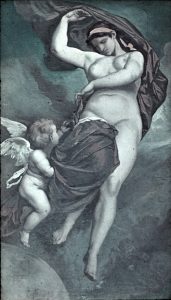One of Oldest Goddess: Gaia

Goddess of Earth in Greek Mythology
Gaia, the ancient Greek goddess, embodies the very essence of Earth. Often referred to as “Mother Earth,” she holds a special place in mythology and is revered as the personification of the planet itself. In this article, we will explore her origins, significance, and influence in Greek mythology.
Origins of Gaia
Gaia is one of the primordial deities in Greek mythology, emerging at the dawn of creation. According to ancient texts, she was born from Chaos, the void that existed before the universe took shape. Gaia represents the fertile ground and nurturing aspects of nature, making her a vital force in the creation of life.
As a foundational figure, Gaia gave birth to many significant deities. She is the mother of Uranus (the sky), who became her consort, and together they produced the Titans, the Cyclopes, and the Hecatoncheires (hundred-handed giants). This lineage illustrates Gaia’s crucial role in mythology, serving as a source of life and a connector of different elements of the cosmos.
Gaia’s Significance
Gaia’s significance goes beyond her role as a mother. She is often associated with fertility, agriculture, and the nurturing aspects of the earth. Ancient Greeks revered her as a goddess who provided sustenance and life, making her an essential figure in their daily lives. Farmers and communities would honor Gaia with rituals and offerings, seeking her blessings for bountiful harvests.
In addition to her nurturing qualities, Gaia is also a figure of power and resilience. Legends depict her as a fierce protector of her children. When Uranus grew tyrannical, she conspired with her son Cronus to overthrow him, symbolizing the struggle against oppression. This aspect of Gaia reinforces her dual nature as both a nurturing mother and a formidable force that fights for justice.
Gaia’s influence in Modern Culture
Gaia’s influence extends beyond ancient mythology into modern culture and environmental movements. Today, she is often invoked in discussions about environmentalism and sustainability. The concept of “Gaia theory,” proposed by scientist James Lovelock, suggests that Earth functions as a self-regulating system. This theory aligns with Gaia’s role as a nurturing force, emphasizing the interconnectedness of all life on Earth.
In art and literature, Gaia continues to inspire. From classical sculptures to contemporary novels, her imagery often symbolizes nature’s beauty and power. Many artists portray her as a figure entwined with flora and fauna, representing the harmony between humanity and the natural world.
Gaia, the Greek goddess of Earth, remains a powerful symbol of life, fertility, and resilience. Her legacy is not just confined to ancient texts; it resonates strongly in today’s world. As we face environmental challenges, Gaia reminds us of our connection to the Earth and the importance of nurturing it. By honoring Gaia, we can strive for a sustainable future, ensuring that her gift of life continues for generations to come.
In summary, Gaia is a multifaceted figure whose impact spans mythology, culture, and environmental consciousness. Understanding her significance helps us appreciate the delicate balance of our planet and the role we play in preserving it. Whether through ancient rituals or modern movements, Gaia encourages us to respect and protect the Earth, our shared home.